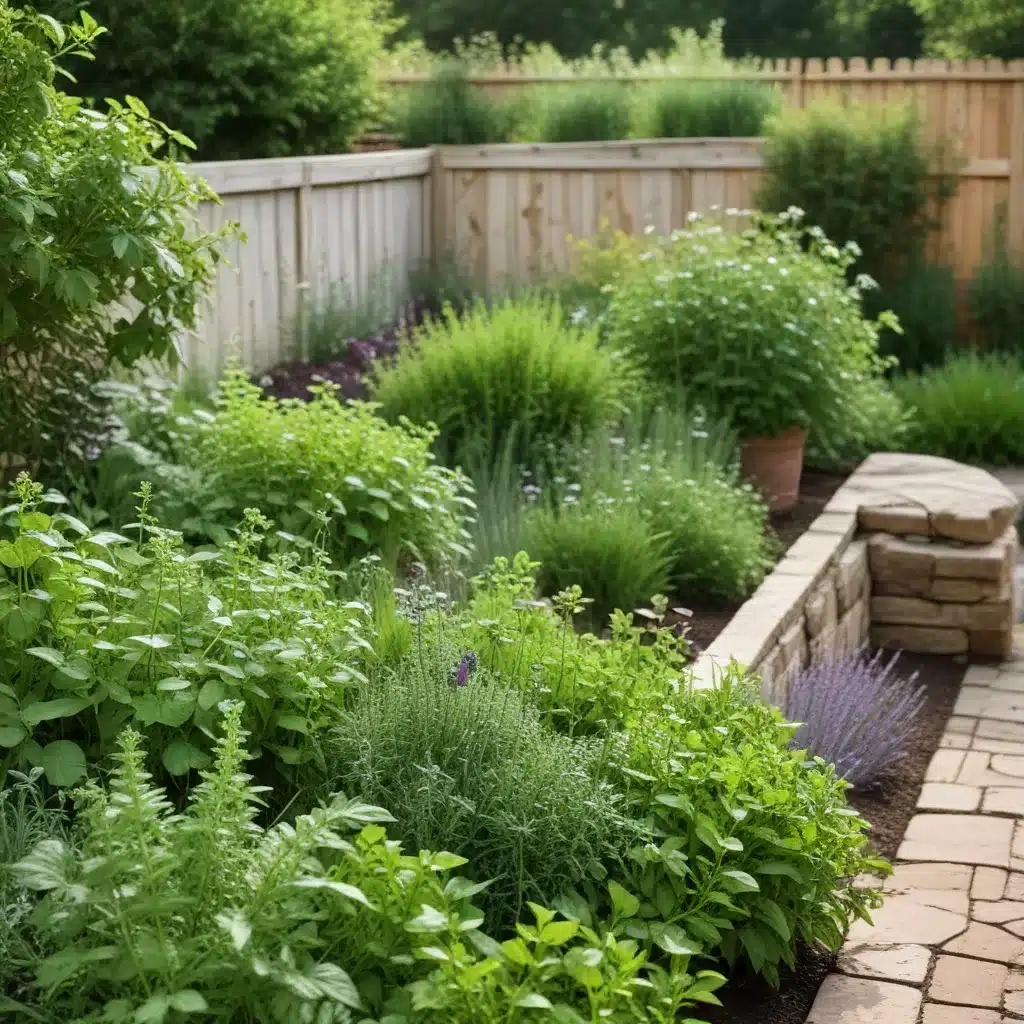
As the farm educator for Crooked Pines Farm, I’m excited to share my insights on creating a beautiful and bountiful herb garden right in your own backyard. Whether you’re looking to grow herbs for culinary delights, natural remedies, or simply to delight the senses, this guide will walk you through the key considerations for designing a serene and productive space.
Garden Design Considerations
Site Selection and Preparation: The first step is to choose the perfect location for your herb garden. Look for an area that receives ample sunlight – most herbs thrive in full sun, with at least 6-8 hours of direct sun per day. Avoid spots that are prone to heavy foot traffic or strong winds, as this can damage delicate plants. Once you’ve selected the site, it’s time to prepare the soil. Herbs favor well-draining, nutrient-rich earth, so consider incorporating compost, aged manure, or other organic matter to enrich the existing soil.
Soil Composition and Amendments: Herbs have diverse soil preferences, so it’s important to test your soil’s pH and adjust as needed. Many herbs, like rosemary, thyme, and lavender, prefer slightly alkaline conditions with a pH between 6.0-8.0. Others, such as parsley and cilantro, thrive in more neutral soil around 6.5-7.0. Consult resources or speak with your local extension office to determine the ideal amendments for your garden.
Layout and Spatial Planning: When designing the physical layout of your herb garden, consider raised beds, in-ground plantings, or a combination of both. Raised beds allow for improved drainage and easier access, while in-ground beds can be more cost-effective and integrate seamlessly into your existing landscape. Arrange your herbs in an aesthetically pleasing pattern, taking into account their mature size and companion planting needs. Remember to leave ample pathways for easy access and maintenance.
Herb Garden Essentials
Choosing Herb Varieties: The options are endless when it comes to herb selection! Consider your family’s culinary preferences, as well as any medicinal or aromatic needs. Classic choices like basil, mint, oregano, and rosemary are always crowd-pleasers, while more unusual herbs like lemon verbena, lavender, and nasturtiums can add unexpected flair. Don’t be afraid to experiment with new-to-you varieties!
Planting Techniques and Spacing: When it comes to spacing, err on the side of closer planting. Many herbs thrive when grown in dense grid patterns, as this helps suppress weeds and maximizes production in a small space. For example, basil and chives can be planted just 6-9 inches apart, while more robust plants like rosemary and sage do well with 12-18 inch spacing. Consult seed packets or online resources for specific recommendations.
Ongoing Maintenance: Regular maintenance is key to keeping your herb garden thriving. Ensure plants receive consistent irrigation, either through drip systems or hand-watering. Prune and deadhead flowers to encourage continued foliage growth. Be vigilant about weeding, as herbs don’t compete well with invasive plants. Mulch around the base of plants to retain moisture and suppress weeds. Lastly, don’t forget to fertilize periodically with a balanced, organic blend.
Herb Garden Functionality
Culinary Uses: Of course, the primary function of an herb garden is to provide a bountiful supply of fresh, flavorful ingredients for the kitchen. Arrange your herbs in proximity to your main cooking area for easy access. Experiment with creative flavor pairings, such as lemon thyme in salads or rosemary roasted potatoes. Preserve excess harvests through drying, freezing, or infusing in oils and vinegars.
Medicinal Benefits: Many herbs possess impressive medicinal properties that have been utilized for centuries. Chamomile can soothe upset stomachs, lavender promotes relaxation, and echinacea may support the immune system. Incorporate these powerhouse plants into your garden, and consult trusted references to learn about their healing applications.
Aromatherapy and Sensory Appeal: The wonderful scents of an herb garden can lift the spirit and engage the senses. Strategically position fragrant favorites like lemon verbena, peppermint, and sage near seating areas or walkways, allowing their aromas to waft through the air. Brushing against the foliage can release even more captivating perfumes. Consider planting sensory gardens with textures, colors, and scents that delight both children and adults.
Creating a Serene Ambiance
Landscape Features and Structures: Enhance the tranquil atmosphere of your herb garden through thoughtful design. Trellises, arbors, and winding paths can add visual interest and a sense of whimsy. Incorporate water features, such as a small fountain or birdbath, to create a soothing soundtrack. Strategically place garden art, sculptures, or wind chimes to spark the imagination.
Seating and Relaxation Zones: Carve out cozy nooks where you can sit and savor the sights, sounds, and scents of your herb oasis. Benches, swings, or cushioned loungers provide comfortable spots to pause and unwind. Surround these seating areas with fragrant herbs and lush greenery for a fully immersive experience.
Lighting and Décor: As the sun sets, keep your herb garden glowing with the addition of string lights, garden lanterns, or path markers. This not only extends the usable hours of your outdoor space but also imbues it with an enchanting ambiance. Finish the look with decorative planters, trellises, or rustic accents that complement the natural beauty of your herbs.
By thoughtfully considering each of these elements, you can create a serene and productive herb garden that nourishes both body and soul. Whether you’re harvesting fresh basil for a summer pasta or simply wandering through the fragrant pathways, your backyard oasis will become a cherished sanctuary. Happy gardening!


